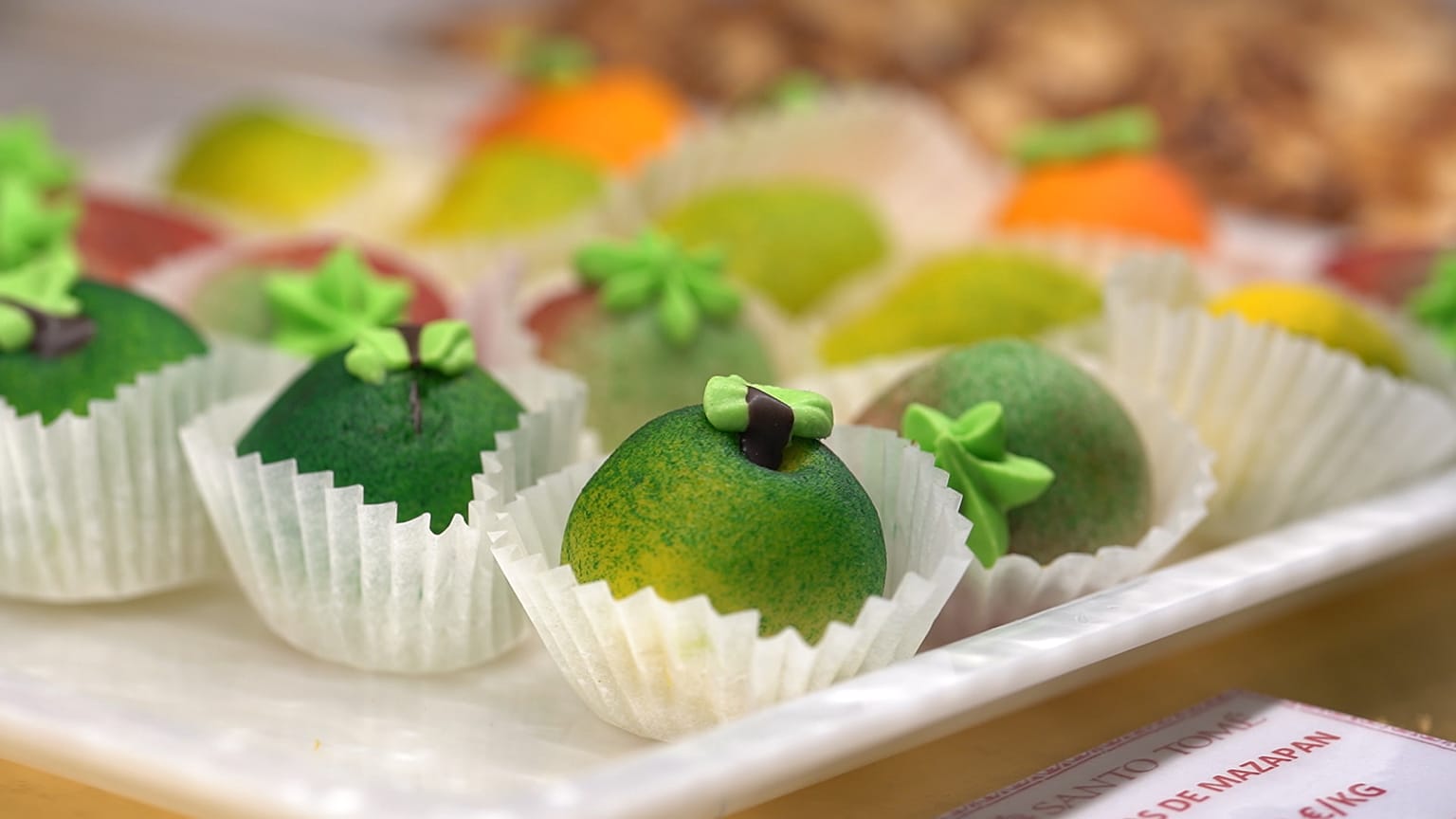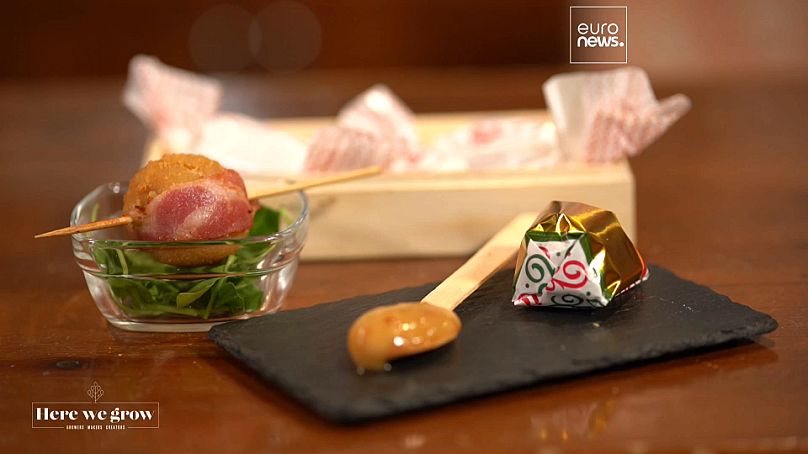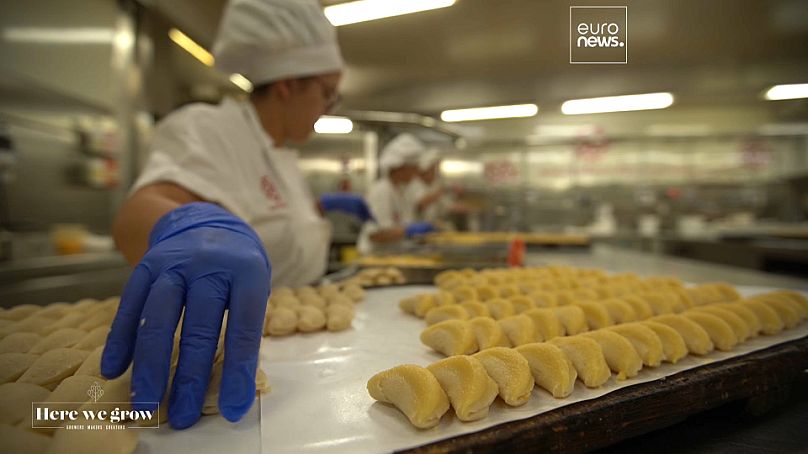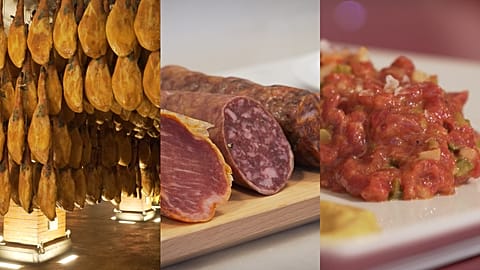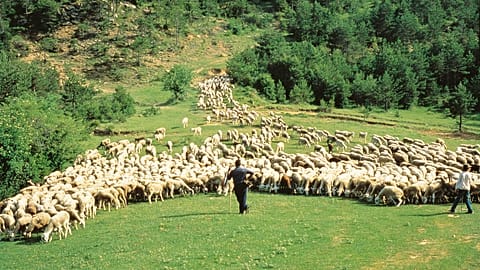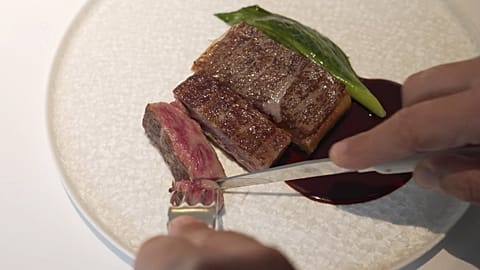Turrrón has been made in Jijona using the same recipe and the same quality criteria for five centuries.
The south of Spain's Valencia region is the birthplace of the famous turrón -- a type of nougat -- and the area that boasts the Protected Geographical Indication (PGI) Jijona and Turrón de Alicante. Here, the Moors planted almond trees from as far back as the eighth century.
The ingredients of these two types of turrón are the same. But the difference lies in how they are treated, as Ana Picó Filliol, Commercial Director of Turrones Picó told Euronews.
“The one from Alicante is a mixture of sugars made into white caramel with toasted almonds, its texture is crunchy and hard and the almonds are whole."
"The one from Jijona is soft, rather than hard", she added. "Its appearance is very different because it’s brown, and all the almonds are ground and homogenised with their fat and caramel sugars. Let's say that it's an evolution. It has the same ingredients as the one from Alicante, but there is one more step in the process. That's the secret of the turrón de Jijona and of the people of Jijona because you need a very sharp hand and many years of knowledge to know when a turrón de Jijona is perfectly cooked”.
Good quality ingredients and new creative recipes
Spanish almond varieties are of exceptional quality: besides their high amount of oligo-elements, minerals and vitamins, they have a high oil content, which makes them soft and juicy and gives them a more intense flavour.
The queen of Spain's almonds is the native Marcona. With its hard shell and flattened shape, it's considered one of the best in the world.
"The Marcona almond is distinguished from the rest mainly by its shape, which is round and a bit heart-shaped”, Picó Filliol proudly told Euronews. “It is our variety, from here in Jijona".
Honey is another key ingredient. Spain is Europe's main producer of honey, with 320 varieties including rosemary, thyme and orange blossom.
Turrrón is a clear example of the influence of Arabic cuisine on Spain’s gastronomy, and it has been made in Jijona using the same recipe and the same quality criteria for five centuries. And it’s in this small town on the hills behind Alicante that you can taste it, in every form.
When you think about turrón, the first things that spring to mind are usually sweets. But nowadays, chefs are choosing to take risks and try out new recipes.
That’s just what Amelia and her sister Ema are doing in their restaurant in Jijona. These siblings are playing with the versatility of turron’s flavours. And it’s proving a hit with the customers!
“People who come from out of town are particularly surprised to find turrón in savoury dishes. So that’s what makes us stand out from the rest … having turrón all year round and in savoury food", said Ema, the owner of L’Entrepà.
The two sisters revealed that the turrón de Jijona is easy to work with when it’s hot, and this makes it a pleasure for them to constantly look for new and innovative creations.
"Apart from the creamy rice made with beef cheeks and turrón from Jijona, we have the ‘sphere’, which is a croquette of turrón, the ‘pastisset’, which is a cod fritter with a little piece of egg yolk turrón in the middle. Turrón is a product that can be used in desserts, salads, and stews.", Amelia added.
Toledo and its centuries-old marzipan
Just south of Madrid, the region of Castilla-La Mancha is home to another traditional confectionery: the exquisite marzipan, guaranteed under the PGI Mazapanes de Toledo.
Almonds, once again, are the main ingredient, alongside honey and sugar. But this marzipan is different from all the others, as Ana de Mesa Gárate, Production Director at Santo Tomé explained to Euronews.
"Marzipan from Toledo is made with 100% sweet almonds. This is the first difference: in Germany, Italy, and France, they mix sweet almonds with bitter almonds. The second difference is that it is baked in the oven at very high temperatures, but for very little time. What we also do is bake it on wooden boards, so that the upper part heats up, but the lower part stays cool and raw. From the moment the bag of almonds is opened until the cooked marzipan can be eaten takes three days.
This marzipan is completely natural and consists of 57% almond, 40% sugar and 3% honey. “This is used to make the marzipan paste, the traditional product”, explains de Mesa Gárate. “Once we have the marzipan paste, we can have some additions that can be egg, chocolate, cabellos de angel (pumpkin jam) and candied yolk."
Marzipan's ingredients -- which are rooted in the Mediterranean diet -- mean it’s a healthy and energy-boosting addition to an active life, as well as a delicious treat at Christmas or any other time of the year.















